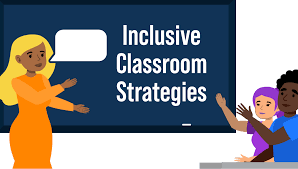Introduction
In today’s diverse educational landscape, it is crucial for teachers to employ classroom strategies that cater to the unique needs of all students. One population that can benefit significantly from specialized teaching strategies is gifted and talented students. These learners possess exceptional abilities in one or more subject areas and often require different approaches to keep them engaged and challenge their intellectual curiosity. This article explores various classroom strategies that educators can use to support the academic, social, and emotional development of gifted and talented students.
1. Differentiation
An essential approach for catering to the needs of gifted and talented students is differentiation. Teachers can provide content, process, or environment modifications designed explicitly for these students. Some ways to differentiate include varying the pace, depth, complexity, or abstractness of content. Teachers might also offer alternative assignments, activities, or projects that tap into individual strengths and interests.
2. Enrichment
Enrichment helps gifted and talented students explore topics beyond the typical curriculum by expanding their learning experiences both within and outside the classroom. Projects, assignments, and other learning activities should be open-ended and flexible enough to challenge these students at their level of capability. This might include attending workshops or seminars in areas of interest, conducting independent research projects, or joining academic competitions.
3. Acceleration
Acceleration allows gifted and talented students to advance through the curriculum more quickly than their peers by providing opportunities for compacting or abbreviation content. This can take several forms such as grade skipping, early entrance into college-level courses, or even completing a degree in less time than the standard duration.
4. Peer Collaboration
Working alongside like-minded peers can vastly improve engagement and foster learning in gifted and talented students. Teachers should seek to create opportunities for these collaborative experiences in project-based learning activities or group assignments that involve problem-solving and critical thinking.
5. Social-emotional Support
As educators cater to the academic needs of their gifted and talented students, they should not forget to provide social-emotional support. Students working at higher academic levels can experience unique pressures and sometimes struggle to relate with their peers. Educators can address these challenges by creating opportunities for authentic connections and offering guidance in coping with social-emotional concerns.
6. Mentorship
Connecting gifted and talented students with mentors who share their interests and abilities can further contribute to their growth and development. Mentors play a vital role in providing insight, guidance, and expertise while expanding the students’ horizons in their areas of strength.
7. Encouraging Inquiry
Gifted and talented students often exhibit a deep sense of curiosity. Teachers should encourage that curiosity by integrating inquiry-based learning strategies into classroom instruction. This can include asking open-ended questions, promoting higher-order thinking skills, or introducing lessons with real-world contexts that encourage students to explore new ideas.
Conclusion
In conclusion, catering to the unique needs of gifted and talented students requires employing a comprehensive range of educational strategies tailored to their abilities and interests. By implementing the approaches discussed above, teachers can help cultivate an educational environment that nurtures the academic, social, and emotional growth of these remarkable learners while fostering their love for learning.





